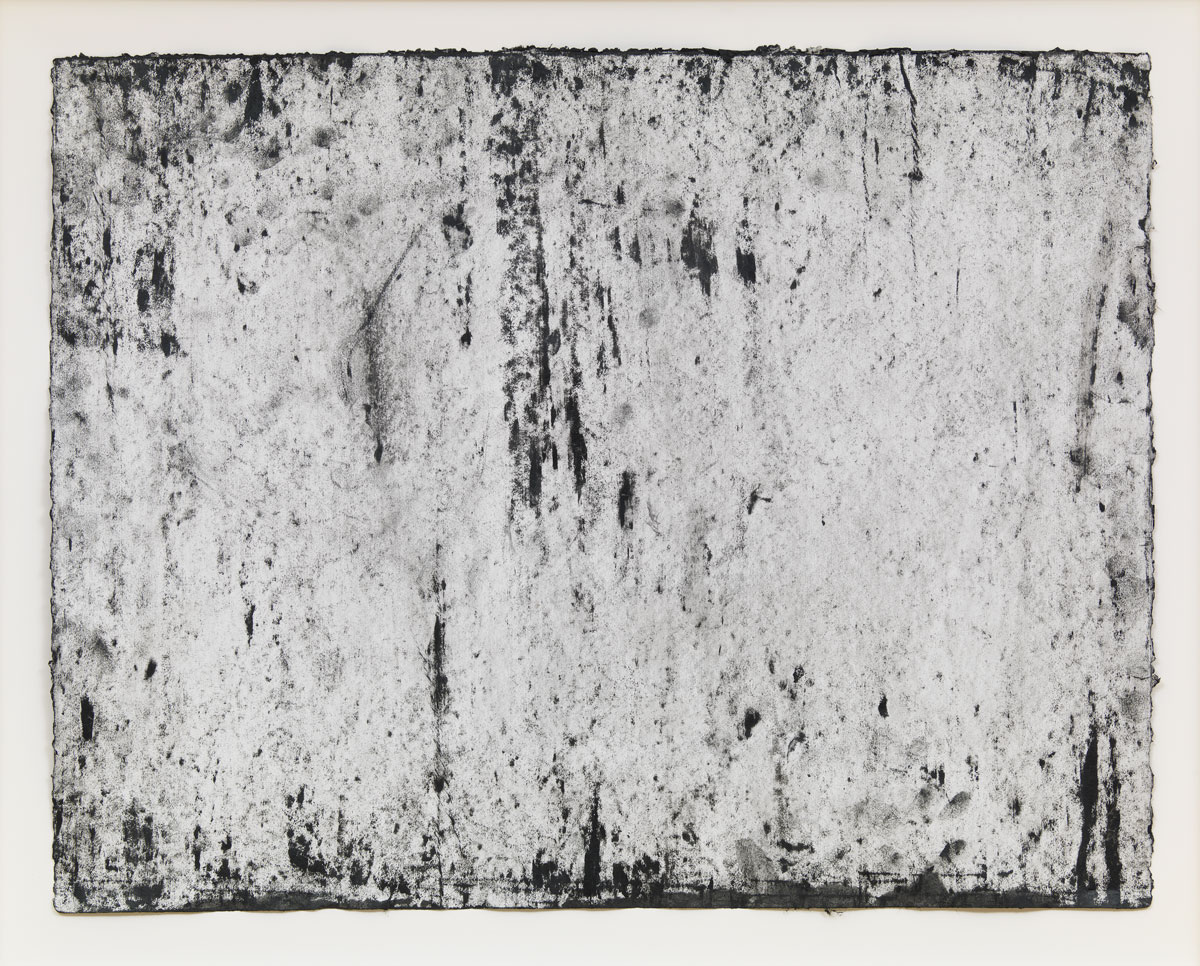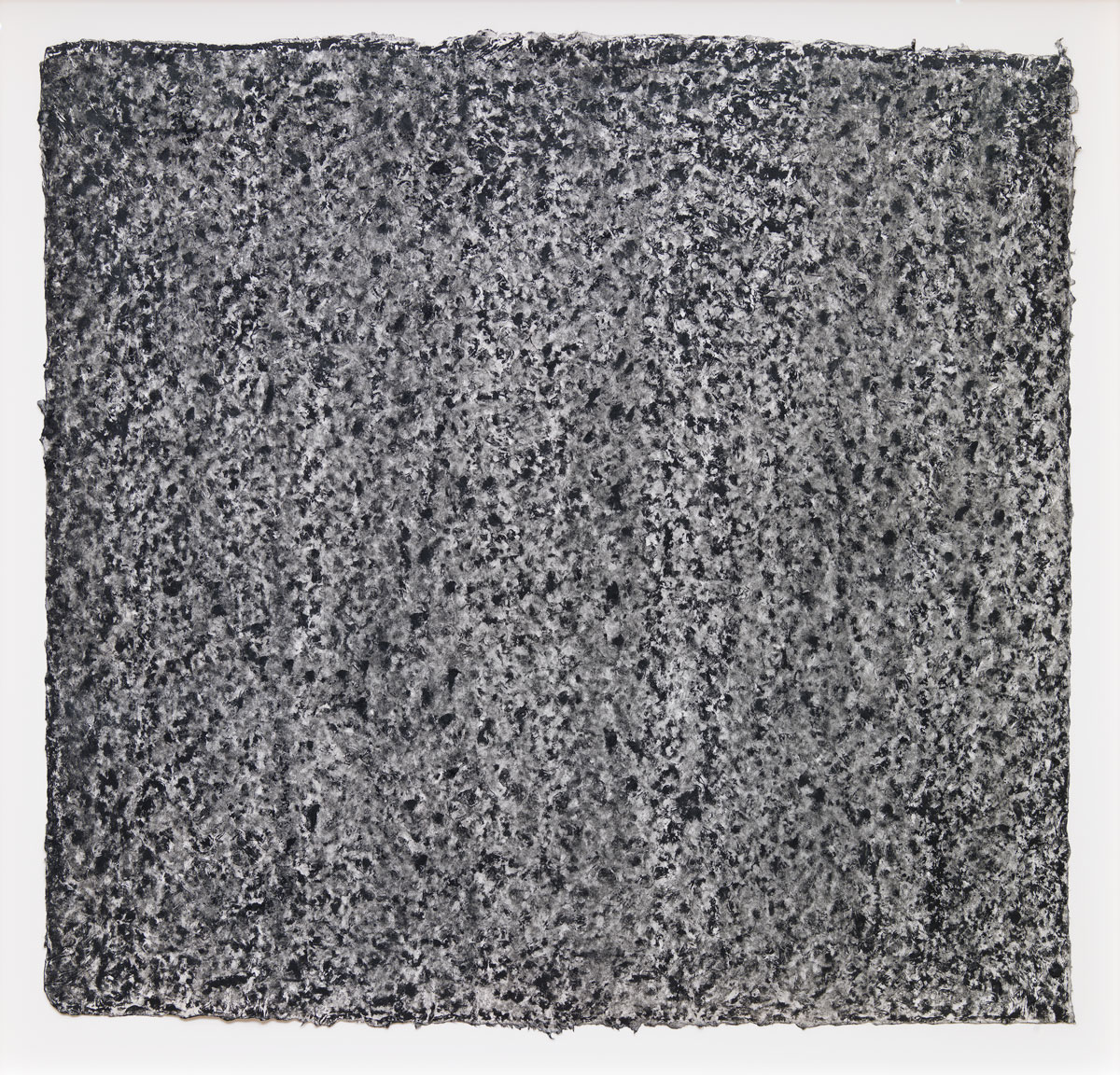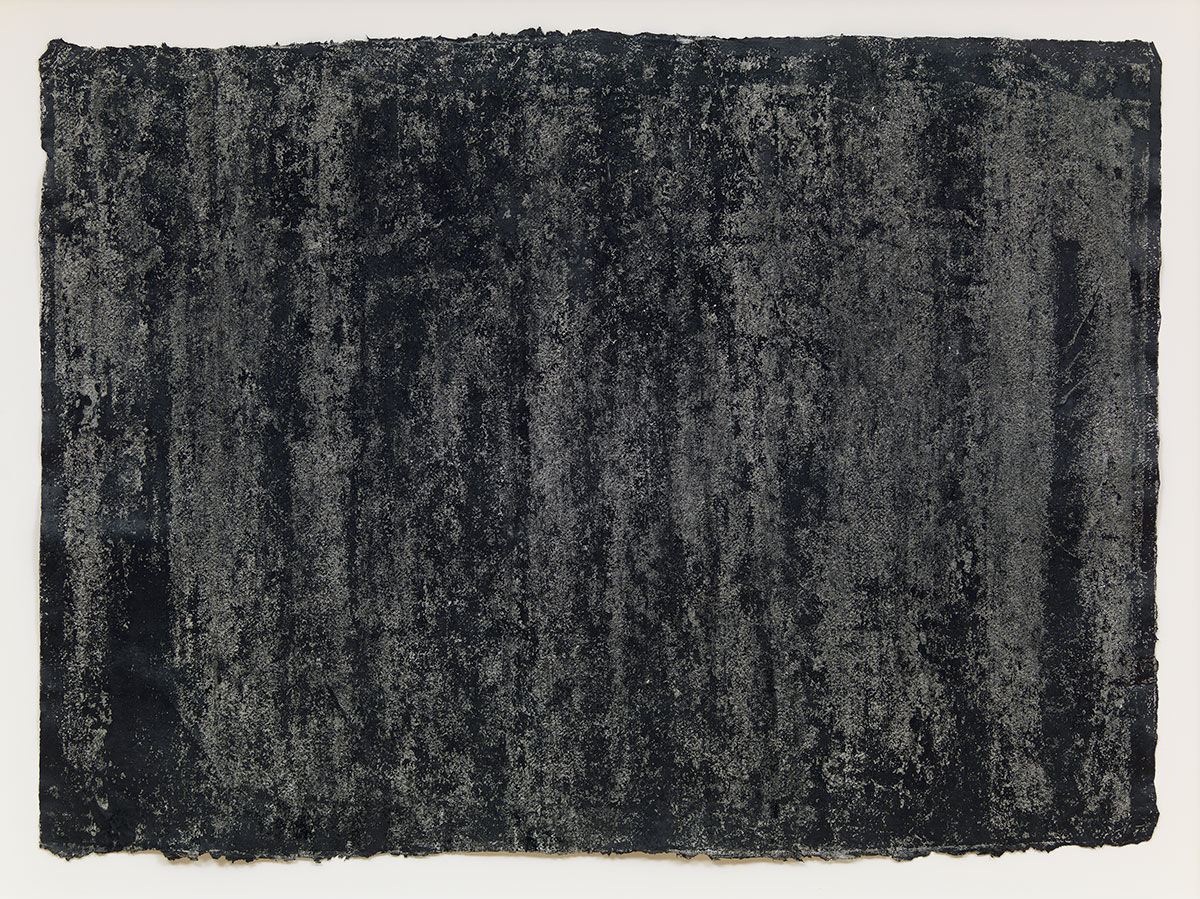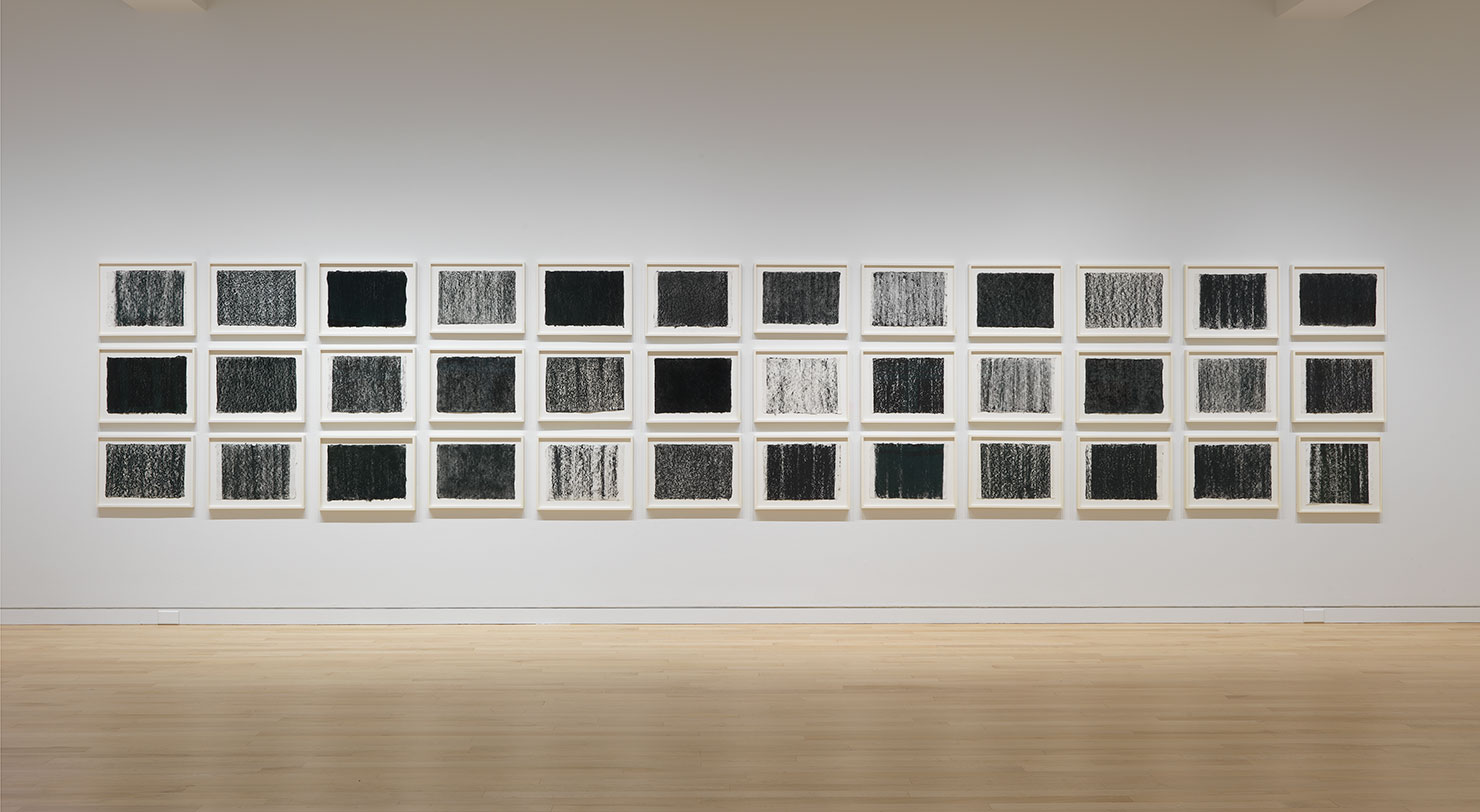PRESENTATION: Serra/Seurat Drawings
 Georges Seurat, the pioneer of the Pointillist pictorial movement, took drawing to new heights that ensured him a place among the great masters of the technique. It was not only his contemporaries who admired his works on paper. They have also been venerated by later artists, like Richard Serra, who considers drawing an autonomous language which he subjects to new processes, experimenting with it in different formats and materials.
Georges Seurat, the pioneer of the Pointillist pictorial movement, took drawing to new heights that ensured him a place among the great masters of the technique. It was not only his contemporaries who admired his works on paper. They have also been venerated by later artists, like Richard Serra, who considers drawing an autonomous language which he subjects to new processes, experimenting with it in different formats and materials.
By Dimitris Lempesis
Photo: Guggenheim Bilbao Archive
The exhibition “Serra/Seurat Drawings” brings together a selection of 22 drawings by the late 19th-century master Georges Seurat, which in turn engage in dialogue with the drawings of Richard Serra, a great admirer of Seurat’s and without a doubt one of the most outstanding artists of the present day. Despite the years that separate them, both artists are notable for working with drawing as an end in itself and taking it to new levels, imbuing it with innovative characteristics and extrapolating it to other areas of their work. The drawings of Georges Seurat were highly valued by artists of his time like Maximilien Luce, Vincent van Gogh, and Paul Signac, who described them in 1899 as “the most beautiful painter’s drawings in existence,” and they have continued to win appreciation from later artists like Henri Matisse, Pablo Picasso, Henry Moore, Bridget Riley, and Richard Serra himself. Seurat was able with very simple means to make appear shapes from the conte crayon darkness placed on the white paper. This is what Serra calls the weight of shapes. “The weight of the drawing derives not only from the number of layers of paintstick but mainly from the particular shape of the drawing. Especially important in Seurat’s drawings is the paper support he uses. He usually chooses a handmade French paper, Michallet, which is characterized by its irregularities, its heavy texture, and its undulations or crests, almost imperceptible to the naked eye but not to the crayon sliding over its surface. Besides the technical dexterity of the execution, it might be said that Seurat ‘feels’ the paper and brings it to life, allowing it to absorb exactly the right amount of crayon to create the lights, volumes, and contrasts that make him worthy to be considered one of the great masters of drawing. This knowledge of the material which distinguishes the great artists was discovered by Richard Serra while he was studying with Josef Albers. Richard Serra thus saw early on that sculpture is not subject only to carving, modeling, and casting, but that the materials have a great influence on the spatial experience they generate. He also gives drawing a transcendent quality, for besides using it as a means to other ends, he turns it into an autonomous language and applies new techniques, formats, and materials. In his Ramble drawings, a series he began in 2015, Serra, like Seurat, revels in his materials, such as the handmade Japanese paper whose manufacturing process makes the fibers create ‘accidents’ so that every sheet is different from the others. This means that no Ramble is the same as any other, both because of the manner in which the artist works on the paper and because of the way the paper reacts. In the “Ramble” drawings, Serra uses two different methods of applying the litho crayon. The first is transfer, and the second direct marking on the sheet. In the first case, the amount of pressure determines a greater or lesser degree of transfer, and so what looks in some works like a light mist becomes a dark blur in others. Direct application meanwhile allows greater control over the amount of grease used on the paper, leading to a wide variety of results with a wealth of fascinating nuances. Serra creates these works on a moderate scale, but still endows them with a certain monumentality by arranging 33 of the smallest “Ramble” drawings in a grid formed by three rows of eleven. With this configuration, the artist shares his creative process with the viewer, who is enabled to perceive the effects created by each impression on the unique sheets of paper. In this exhibition, viewers can appreciate the evolution of Seurat’s drawings after his training at the Lehmann school, which he subsequently left, abandoning the ‘traditional’ path with it. He also left behind him the drawings he made during his military service, some with colored pencils, in his famous Brest sketchbooks, which marked the artist’s development toward a definitive break with academicism and the beginning of his mature language.
Photo: Richard Serra, Ramble 3-54, 2015, Litho crayon and pastel powder on handmade paper, 50,2 x 64,1 cm, Collection of the artist, Artwork © Richard Serra/Artists Rights Society (ARS), New York, Photo: Robert McKeever
Info: Curators: Lucía Agirre and Judith Benhamou, Guggenheim Bilbao, Abandoibarra et.2, Bilbao, Spain, Duration: 9/6-6/9/2022, Days & Hours: Tue-Sun 11:00-19:00, www.guggenheim-bilbao.eus/




![Georges Seurat, Reclining Man (Study for “Bathers at Asnières”) [L’homme Couché (Étude pour “une Baignade, Asnières”)], 1883-84, Conté crayon on paper, 24.5 x 31.5 cm, Fondation Beyeler, Riehen/Basel, Sammlung Beyeler, Photo: Peter Schibli](http://www.dreamideamachine.com/web/wp-content/uploads/2022/07/Seurat-l-homme-couche.jpg)
![Georges Seurat, Tree Trunks Reflected in Water (Homage to Stéphane Mallarmé) [Troncs d’arbres se reflétant dans l’eau (Hommage à Stéphane Mallarmé)], 1883-84, Conté crayon on paper, 22.7 x 31 cm, Villa Flora, Winterthur; permanent loan to Hahnloser/Jaeggli Foundation, Winterthur](http://www.dreamideamachine.com/web/wp-content/uploads/2022/07/Seurat-Troncs.jpg)

